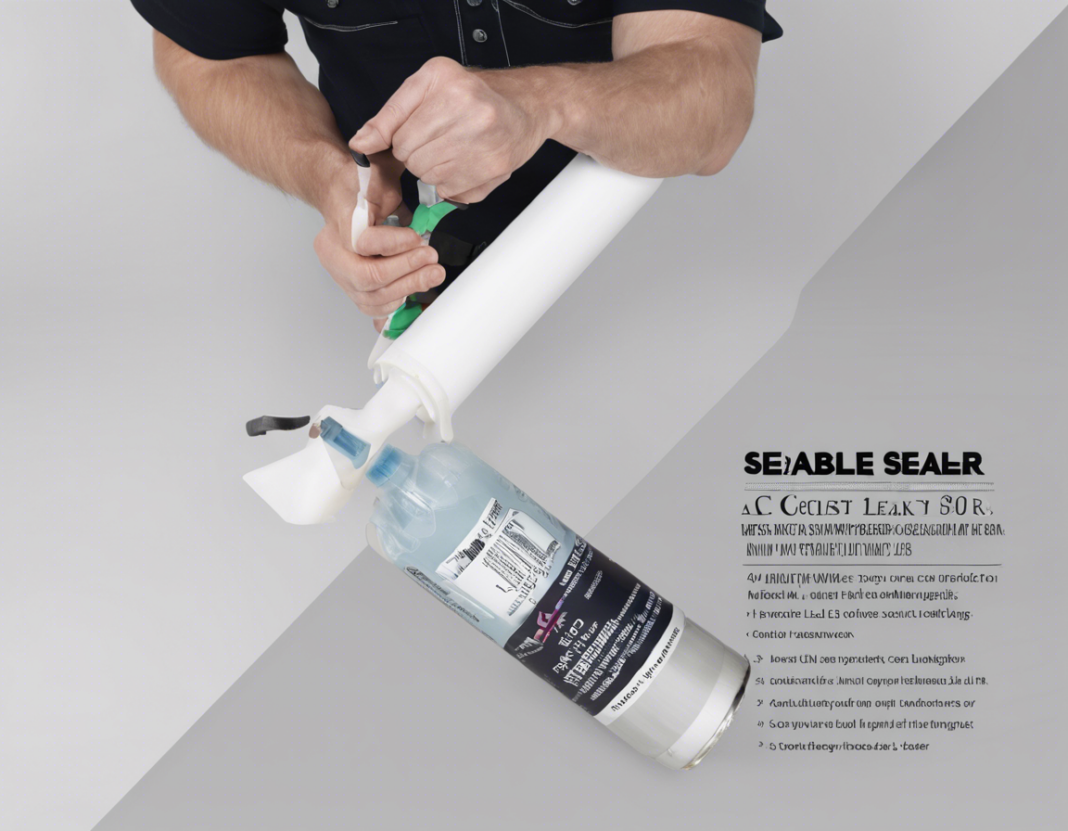Introduction
Unpleasant surprises are part and parcel of homeownership, with air conditioning issues ranking high among them. One common problem that many face is refrigerant leaks in their AC systems. These leaks can cause inefficient cooling, increased energy bills, and potential damage to your unit if left unaddressed. While calling a professional HVAC technician is always recommended for such issues, there are instances where a quick fix can temporarily address the problem. In this article, we will explore the DIY AC leak sealer and its efficacy in resolving minor refrigerant leaks.
Understanding AC Refrigerant Leaks
Refrigerant leaks can occur due to various reasons, including corrosion, loose fittings, or manufacturing defects. When your AC unit leaks refrigerant, it not only affects its cooling efficiency but also has environmental implications due to the harmful chemicals present in most refrigerants. Therefore, prompt detection and repair of leaks are essential for maintaining the optimal performance of your air conditioning system.
Why Consider a DIY AC Leak Sealer?
A DIY AC leak sealer can be a suitable temporary solution in certain scenarios, such as when you notice a minor leak and are unable to immediately get professional assistance. These sealers are designed to temporarily seal small leaks in your AC system, buying you some time before a permanent repair or replacement is conducted. It is crucial to use these sealers as a temporary measure and not as a long-term fix for refrigerant leaks.
How DIY AC Leak Sealers Work
DIY AC leak sealers generally come in the form of a canister containing a sealing agent that is injected into the AC system. When the sealer is released into the system, it circulates along with the refrigerant and seeks out the source of the leak. Upon reaching the leak point, the sealant reacts with the surrounding air and moisture to form a flexible seal that plugs the hole temporarily. It is essential to note that these sealers are not a substitute for professional repairs, especially for significant leaks or damage to AC components.
Benefits of Using a DIY AC Leak Sealer
- Cost-effective: DIY AC leak sealers are relatively affordable compared to professional repairs or replacement of parts.
- Convenience: These sealers are easy to use and do not require specialized tools or skills.
- Temporary Solution: Ideal for minor leaks that need a quick fix before professional help is available.
- Preserves Refrigerant: By sealing minor leaks, the sealer prevents the loss of refrigerant, extending the lifespan of your AC unit.
Limitations of DIY AC Leak Sealers
While DIY AC leak sealers can offer a temporary fix, they come with certain limitations that users should be aware of:
- Not Suitable for Large Leaks: These sealers are designed for minor leaks and may not be effective for significant refrigerant leaks.
- Temporary Fix: The seal created by the sealer is not permanent and may degrade over time, necessitating professional repairs.
- Compatibility Concerns: Some AC manufacturers may void warranties if they detect the use of sealants in the system.
Tips for Using a DIY AC Leak Sealer
If you have decided to use a DIY AC leak sealer, here are some tips to ensure its effectiveness:
- Follow Instructions: Read and follow the manufacturer’s instructions carefully for the proper application of the sealer.
- Locate the Leak: Try to pinpoint the source of the leak before applying the sealer for better results.
- Monitor Performance: Keep an eye on your AC system after using the sealer to check for any improvements or new leaks.
- Consult a Professional: Use the sealer as a temporary measure and consult a professional HVAC technician for a permanent solution.
Frequently Asked Questions (FAQs)
- Can I use a DIY AC leak sealer for automotive AC systems?
-
Yes, many DIY AC leak sealers are suitable for use in automotive AC systems as well.
-
How long does a DIY AC leak sealer last?
-
The effectiveness of the sealer can vary, but it is generally considered a temporary solution that can last for several weeks to months.
-
Are DIY AC leak sealers environmentally safe?
-
Most DIY AC leak sealers are designed to be safe for the environment when used as directed.
-
Can I use a DIY AC leak sealer in a heat pump system?
-
It is recommended to check the compatibility of the sealer with heat pump systems before application.
-
Do DIY AC leak sealers work on all types of refrigerants?
- Not all sealers are compatible with every type of refrigerant, so it is essential to choose one that matches the refrigerant in your AC system.
In summary, a DIY AC leak sealer can be a convenient stopgap measure for minor refrigerant leaks in your air conditioning system. However, it is crucial to view it as a temporary solution and not a permanent fix. Regular maintenance, prompt detection of leaks, and professional repairs are still the best practices for ensuring the longevity and efficiency of your AC unit. If you are unsure about using a DIY sealer or the severity of the leak, always seek guidance from a qualified HVAC technician.

